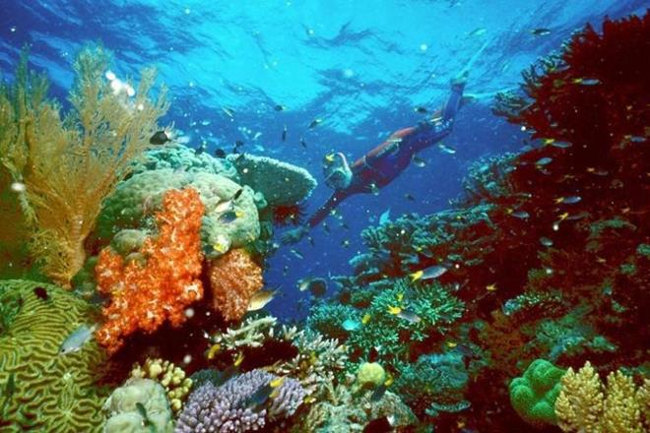Coral reefs are severely bleached without the impact of El Nino
According to the journal Science, the risks to coral reefs are increasing mainly due to human activity, rising water temperatures mean less than 80% recovery time between phases. bleaching section more than three decades ago.
In a study of 100 coral reefs in the world, it was reported that corals would have a bleaching event every six years, from every 27 years in the 1980s, when bleaching events began. observed.
According to reports, with the ability of human activity to cause an increase in sea temperature, coral reefs can be bleached every hot summer in the coming decades.
 Coral reefs are severely bleached without the impact of El Nino Picture 1
Coral reefs are severely bleached without the impact of El Nino Picture 1
The co-author of the study, Andrew Baird, said: "Scientists have said in the next 30 to 40 years that annual bleaching events can be a serious possibility unless we solve the problem. climate change ' .
Coral reefs are being damaged by increasing rates and even safe areas are at risk of being destroyed by the middle of the century. Bleaching is a problem because, although it does not cause immediate death, it puts corals at risk of dying gradually and more. Coral bleaching depends on stress factors caused by factors such as high water temperature. Without algae to provide corals with bright colors, corals turn a magical white and start dying. Coral said it took 10 to 15 years to fully recover the bleaching situation, the report said.
The report says that heating temperatures of 1.5 or 2 degrees Celsius due to pre-industrial conditions will certainly contribute to the decline Coral reefs of the world. Research by 25 researchers, led by Terry Hughes from the Australian Research Council's Coral Reef Research Center, found that 31% of coral reefs tested were at risk of bleaching in 2016 compared to only 4% in the 1980s. In the past, coral bleaching occurred when the wind heated up and conditions when the El Nino weather heated the surface of the sea. Now, coral reefs are still bleached even when there is no wind, global temperatures increase rapidly without the presence of El Nino anymore.
See more:
- Found shelter for corals threatened by global warming
- Three new species of crustaceans are found in coral reefs throughout the Indian Ocean and Pacific Ocean
- The poisonous sea turtle tugs the jellyfish eat voraciously
You should read it
- Coral reefs are threatened by ocean acidification, which can disintegrate before 2100
- What is El Nino? Why is there such a name?
- NASA announces 3D model of El Nino phenomenon
- La Nina's weather phenomenon is what once killed 22,000 people
- Acid in the Arctic Ocean increases rapidly with climate change
- Scientists develop sun shields to prevent coral bleaching
- Found shelter for corals threatened by global warming
- Robot Boys help measure the impact of climate change
- Climate change is causing the sea to flow faster, scientists are still confused about what the harm will be
- Science warns: 70-90% of corals will disappear in the next 20 years, and become extinct in 80 years
- Climate change is so severe that hibernating bears woke up 2 months early
- Concrete bubbles promise to help restore coral reefs faster
May be interested

The UK has found the latest high mountain - Hope Mountain

Insecticides harm the honey bee life

Two new frog species are named after legendary filmmaker Stanley Kubrick

The world's largest underwater cave system is found on the Yucatan Peninsula

Seven new species of spiders were discovered, named after Harry Potter, the GoT character

You are curious, how the ancestors of today's vegetables are shaped






 Coral reefs are threatened by ocean acidification, which can disintegrate before 2100
Coral reefs are threatened by ocean acidification, which can disintegrate before 2100 Concrete bubbles promise to help restore coral reefs faster
Concrete bubbles promise to help restore coral reefs faster What is El Nino? Why is there such a name?
What is El Nino? Why is there such a name? Scientists develop sun shields to prevent coral bleaching
Scientists develop sun shields to prevent coral bleaching Science warns: 70-90% of corals will disappear in the next 20 years, and become extinct in 80 years
Science warns: 70-90% of corals will disappear in the next 20 years, and become extinct in 80 years Detection of the second El Nino, the impact spread throughout the Southern Hemisphere
Detection of the second El Nino, the impact spread throughout the Southern Hemisphere